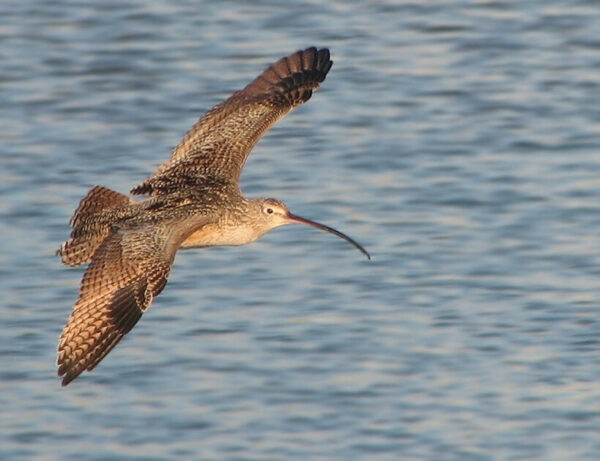The curlew is a large wading bird of Numenius, characterized by its long, slender, downcurved bill and mottled brown plumage. It is the largest European wading bird and can be found in winter estuaries and summer moors. The scientific name for this species is Numenius Arquata.
Physical Traits
The curlew has a long, down-curved bill typically longer than its head. It has mottled brown plumage with white underparts and a barred tail. Females are larger than males but have the same coloring. They have long, bluish legs and round yellow eyes, apt for nocturnal activities.
Life Span
The average life span of a curlew in the wild is around 8 to 10 years, although some individuals may live up to 20 years in captivity.
Habitat
Curlews inhabit wetland areas such as marshes, bogs, estuaries, and coastal mudflats. They are also found on open grasslands and upland moors during the breeding season.
Diet
Curlews feed mainly on insects, earthworms, small crustaceans, and other invertebrates in shallow water or on land. They also eat small mammals such as mice or voles when available.
Reproduction
Curlews breed from April to June each year in temperate regions of Europe and Asia. The female lays two to four eggs which both parents incubate for around 25 days before hatching. The chicks fledge after about three weeks but remain dependent on their parents for several more weeks before becoming independent.
Conservation Status
The conservation status of curlews varies across their range due to habitat loss and degradation caused by human activities such as agriculture and development projects. In some parts of Europe, they are considered vulnerable; in others, they are listed as near-threatened or least concern species according to IUCN Red List criteria.
Interesting Facts
The curlew’s call is unmistakable – described as “cur-lee” or “cur-loo” – and can be heard from miles away! The curlew’s long bill helps its probe deep into mudflats where it finds food, such as worms or small crustaceans that other birds cannot reach!

